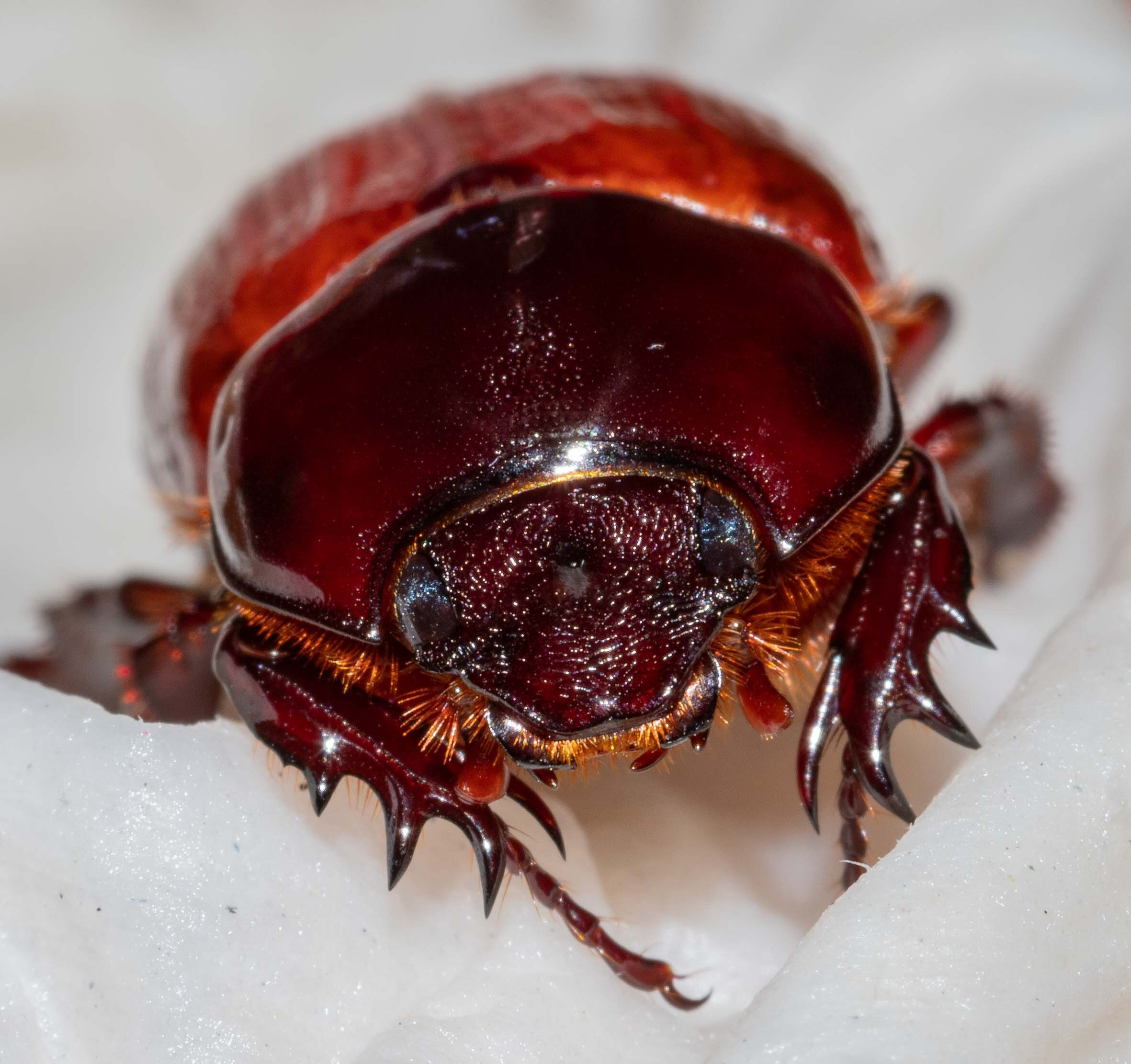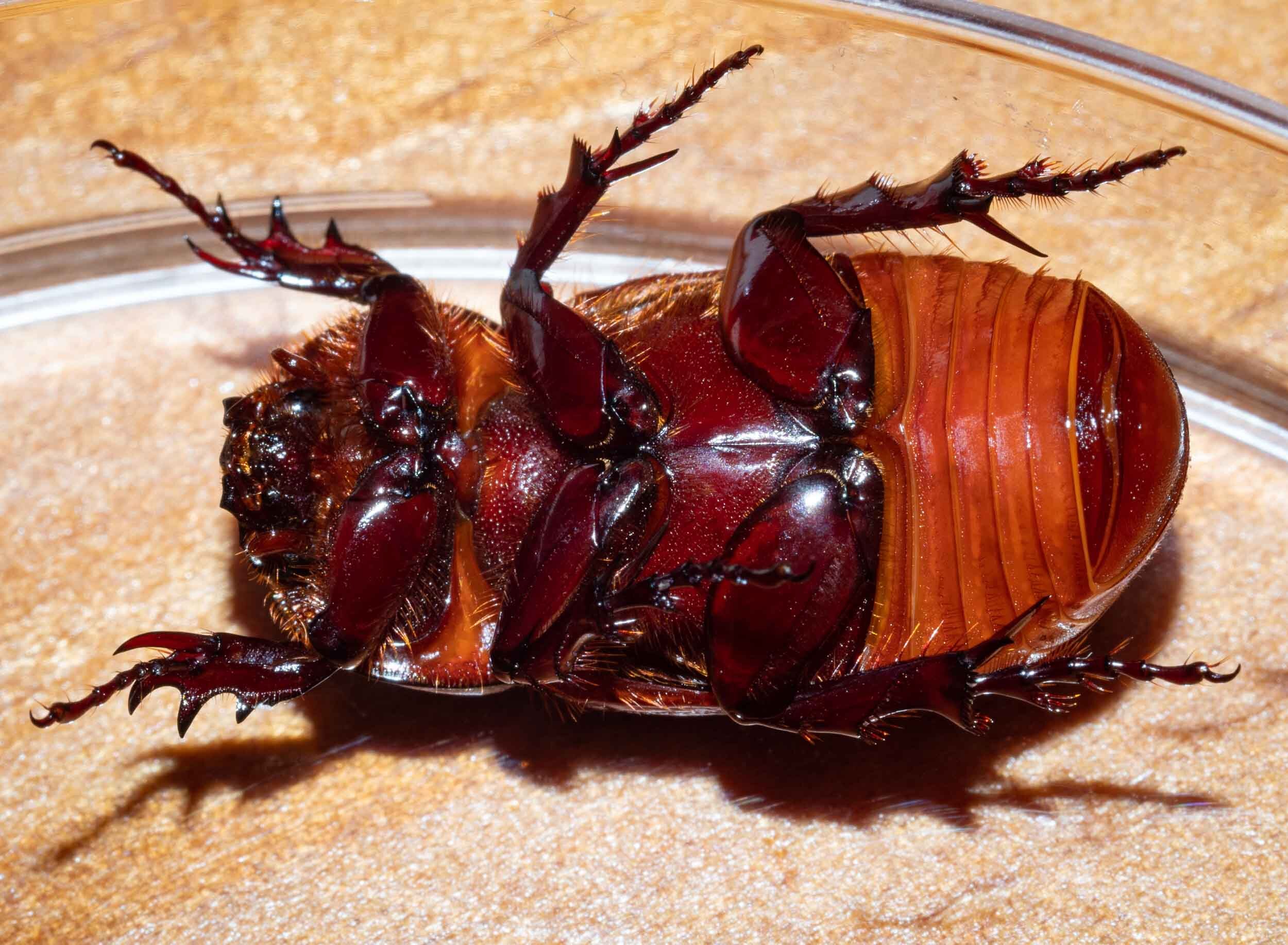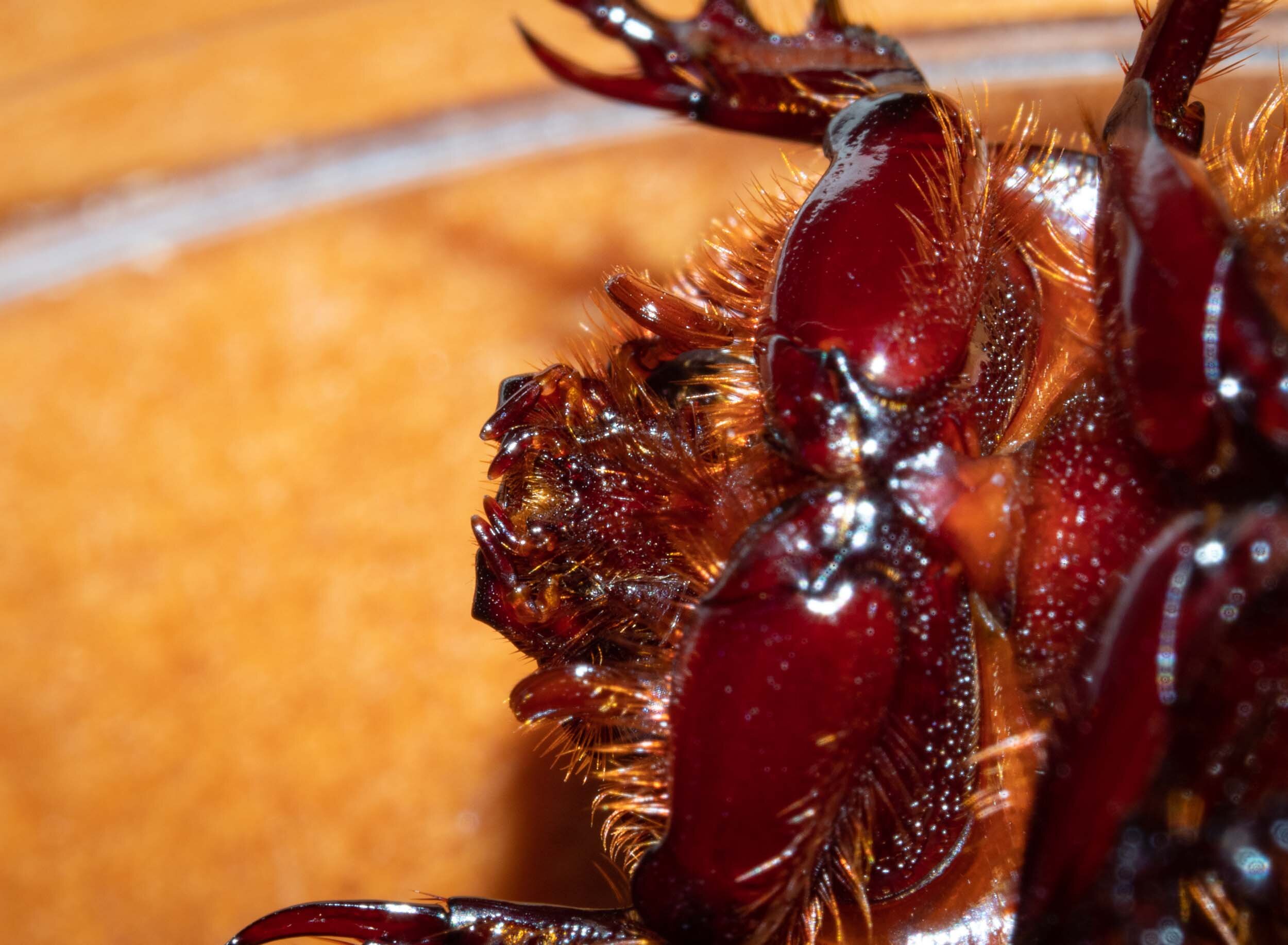Dynastinae

Workbook
Notes on the raising and identification of two beetle larvae, collected from compost heap in July 2019.
This is a working notes pages, my version of a lab book.
The ‘Baby scarabs’ story was published as part of the blog Buddy update blog December, 2019
Summary of timeline
late July 2019: collected as larvae from composting heap … housed in soil-filled container
27/11/19: noticed that both larvae had pupated … removed them to Humidicrib
23/12/19: Beetle 1 eclosed …. after 36 hours it was placed into soil-filled tank and it immediately burrowed
29/12/19: Beetle 2 eclosed …. after 5 hours it was also placed in tank and it immediately burrowed
29/12/19: Beetle 2 was unearthed from tank, photographed, and returned to tank
Identification notes
Family Scarabaeidae …
… based on overall shape, distinctive antennae, and the 5-5-5 tarsal formula. And on characteristic larvae.
NOT Lucanidae: mandibles are NOT prominent; larvae LACK the vertical anal slit (check larval images and add more to the panels above)
NOT Bolboceratidae: body NOT convex/hemispherical; elytra DO NOT cover the abdomen
NOT Passalidae: head NOT strongly prognathous, antennae clubs DO fold close, and DOES HAVE scutellum
Subfamily Dynastinae …
… based on: habit; strong mandibles of larvae; horn on head; depressions of pronotum; two pairs of abdominal spiracles visible below edge of elytra
NOT Melotonthinae as: labrum NOT apparent; mandibles NOT COMPLETELY concealed from above; DO HAVE horns
NOT Rutelinae as: tarsal claws EQUAL; DO HAVE horns
NOT Cetoniinae as: body not flattened; mandibles NOT concealed
NOT Aphodinae as: abdominal spiracles ARE visible
NOT Scarabaeinae as: hind legs NOT situated far back on body; scutellum PRESENT
Genus?
No luck with identification to genus. The most relevant reference (Carne, 1957) is a book and unavailable online.
Larvae
Collected two grubs from organically rich soil (ie compost heap) in late July 2019.
They were housed in a container of soil, covered and therefore kept quite dark. Occasionally I sprayed the soil with a little water and every month or so I replace the it with a fresh batch. When I did this, and placed the grubs back on top of the new soil, they would soon disappear again. They’d dig in using their short legs and by twisting their bodies. And deep in the soil they would again create small cavities in which to live and feed.
9th October
Pupae
Then, in late November, I noticed that they’d changed. Each grub, within its own soil chamber, had moulted into a pupa.
So I tipped them out of their homes for a closer look.
I created a small Humidicrib for each pupa – a plastic container with moistened paper towel as a bed and an opaque cover to keep out the light.
My first good look at a scarab pupa. They seemed identical to each other. Each was in its own soil cave, shed larval skin alongside. (27/11/19)
They continued to develop, obviously alive – they responded to disturbance with the occasional flexing of the body.
This 3 second video shows ‘Beetle 2’ today, Dec 21.
By mid December it was possible to recognise each pupa by differences in their colouring. Beetle 1 was clearly more developed than Beetle 2. Beetle 1 eclosed on 23/12/19, Beetle 2 nearly a week later (29/12/19).
Both were returned to a holding tank with a layer of compost – and they immediately buried and disappeared from sight. I intend to release them once I have all the information needed for species identification.
It is interesting to note the development of colour in the elytra. At eclosion, the elytra a very pale. They turn golden within a few hours. Within 24 hours the pronotum and elytra are nearly the same colour. But this is not the final colour. When I checked five days later, Beetle 1 had become significantly darker (see photo of the 2 beetles together, taken on 29/12/19).
Beetle 1 photo gallery
Beetle 2 photo gallery
Carne, P.B. 1957. A systematic revision of the Australian Dynastinae : (Coleoptera: Scarabaeidae). CSIRO. Division of Entomology.
This is a workbook page … a part of our website where we record the observations and references used in making species identifications. The notes will not necessarily be complete. They are a record for our own use, but we are happy to share this information with others.














































